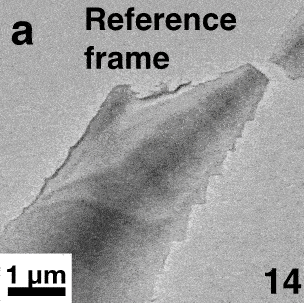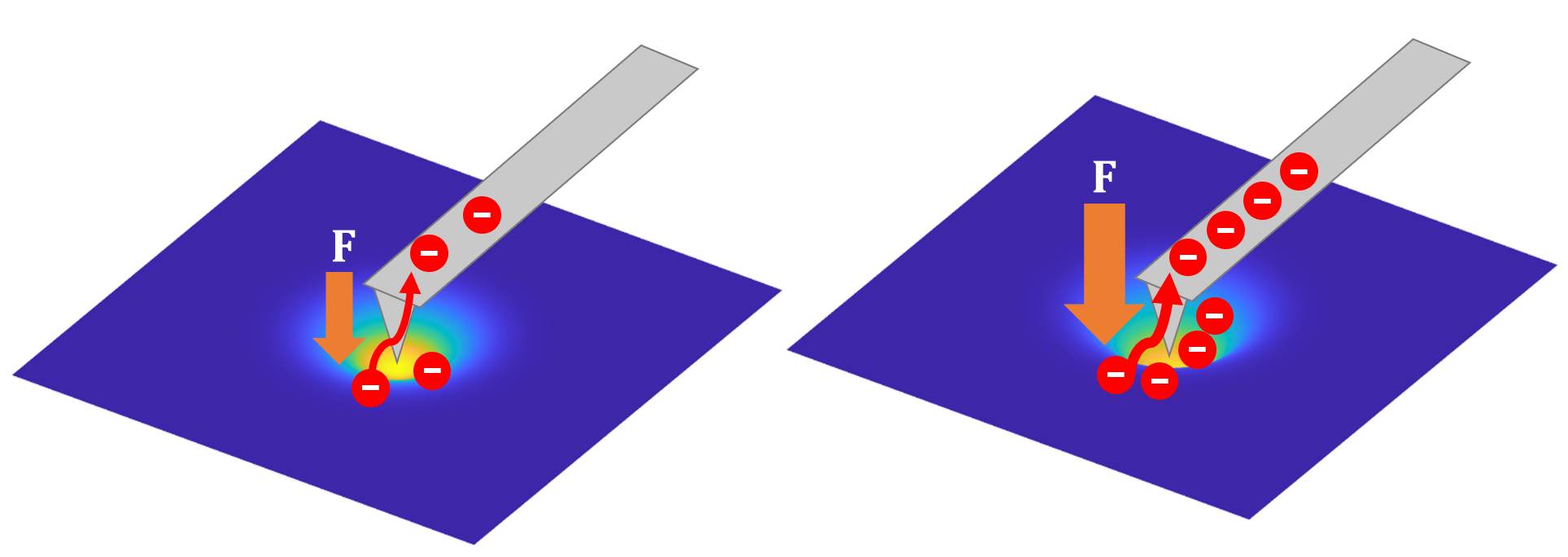Sri Chinmoy
Flexoelectricity

Many functional electronic devices exploit coupling between mechanical deformation and an electric response. The most common of these couplings
is piezoelectricity, where strained materials develop a polarization. While piezoelectricity is useful in a wide range of applications,
issues arise in material selection. Because only non-centrosymmetric materials can exhibit piezoelectricity, there are limited choices for a desired response.
A second-order effect, flexoelectricity, couples polarization and the strain gradient, rather than strain. Unlike for piezoelectricity, all insulators
are capable of exhibiting a flexoelectric response because the strain gradient breaks the crystal structure symmetry, as seen in the schematic.
That is, while a limited set of materials are piezoelectric, all insulators exhibit flexoelectric properties.
Flexoelectricity has been known to exist since at least the 1950s, but it has often been neglected because its effects are small at the macro scale.
However, flexoelectricity becomes extremely important at the nanoscale—very large flexoelectric fields on the order of 109 V/m or more can be generated in the material.
The TEM images of a DyScO3 sample are an example of how significant the bending (caused by the inverse flexoelectric effect) can be when the material is subjected to different electron fluxes in a TEM.
Because flexoelectricity occurs in a wider range of crystal structures than piezoelectricity, it can be extensively exploited in device design.
With careful choice of geometry, composite materials that have piezoelectric properties can be designed using non-piezoelectric materials.
Furthermore, flexoelectricity can be used to allow the writing of memory with only mechanical force or as an operation principle of nanoscale actuators and generators.
It is also important in many other phenomena, ranging from ferroelectric and ferroelastic domain walls in ferroelectrics to the crack tips in bone fractures.
 Naturally, the crystal structure of a material is an important factor in its flexoelectric response, as the schematic in the figure implies. However, other factors can have a large affect on the response.
In SrTiO3, for example, the flexovoltage can even change signs depending on its surface structure.
Various other factors such as defects or other local structural distortions can also affect the
character of a flexoelectric response. To investigate the flexoelectric effect, we use experimental techniques including dynamic mechanical analysis and conductive AFM alongside a wide range of characterization methods such as XPS, XRD, and TEM.
To complement the experimental work, we also employ DFT and FEA calculations. Our group works to advance the fundamental science of flexoelectricity by
studying the relationship between a material's crystal structure, surface, and defect content and its flexoelectric response, the relationship of flexoelectricity and triboelectricity, and other flexoelectric phenomena.
Naturally, the crystal structure of a material is an important factor in its flexoelectric response, as the schematic in the figure implies. However, other factors can have a large affect on the response.
In SrTiO3, for example, the flexovoltage can even change signs depending on its surface structure.
Various other factors such as defects or other local structural distortions can also affect the
character of a flexoelectric response. To investigate the flexoelectric effect, we use experimental techniques including dynamic mechanical analysis and conductive AFM alongside a wide range of characterization methods such as XPS, XRD, and TEM.
To complement the experimental work, we also employ DFT and FEA calculations. Our group works to advance the fundamental science of flexoelectricity by
studying the relationship between a material's crystal structure, surface, and defect content and its flexoelectric response, the relationship of flexoelectricity and triboelectricity, and other flexoelectric phenomena.
Recent Publications:
-
Experimental determination of flexoelectric coefficients in SrTiO3, KTaO3, TiO2, and YAlO3 single crystals
C. A. Mizzi, B. Guo, and L. D. Marks
Phys. Rev. Mater. 6 (2022) 055005
-
When Flexoelectricity Drives Triboelectricity
C. A. Mizzi and L. D. Marks
Nano Lett. 22 (2022) 3939-3945
-
Does Flexoelectricity Drive Triboelectricity?
C. A. Mizzi*, A. Y. W. Lin*, and L. D. Marks (*equal contribution)
Phys. Rev. Lett. 123 (2019) 116103
-
Charging ain't all bad: Complex physics in DyScO3
C. A. Mizzi, P. Koirala, A. Gulec, and L. D. Marks
Ultramicroscopy 203 (2019) 119-124
-
Direct Observation of Large Flexoelectric Bending at the Nanoscale in Lanthanide Scandates
P. Koirala, C. A. Mizzi, and L. D. Marks
Nano Lett. 18 (2018) 3850-3856
